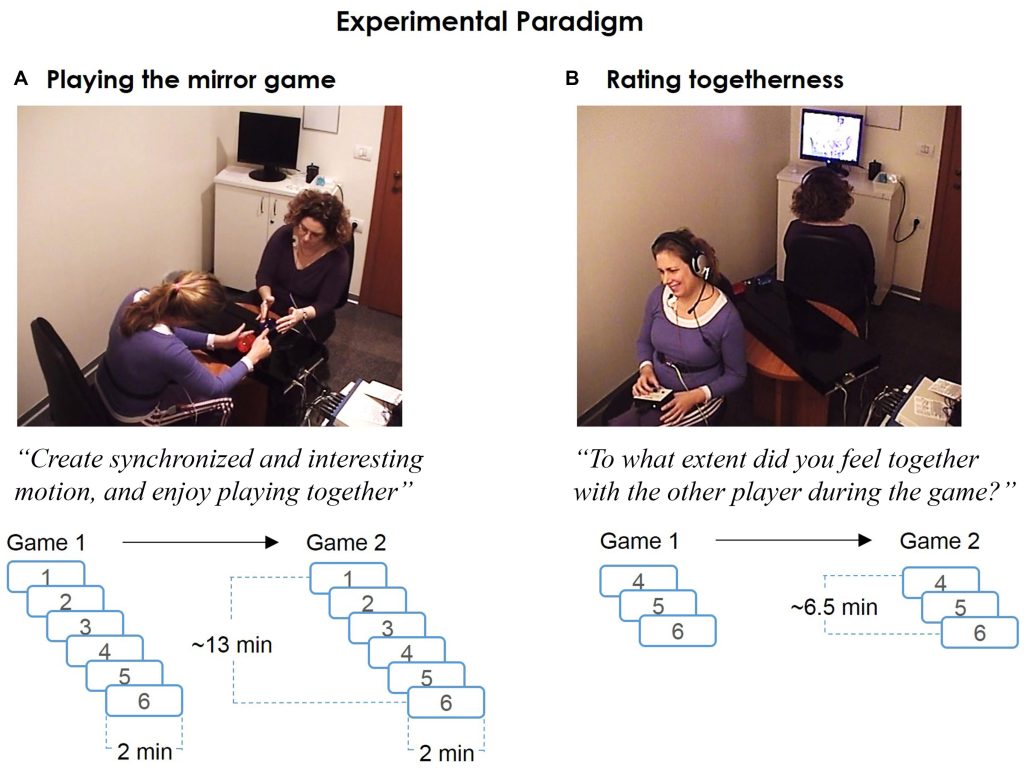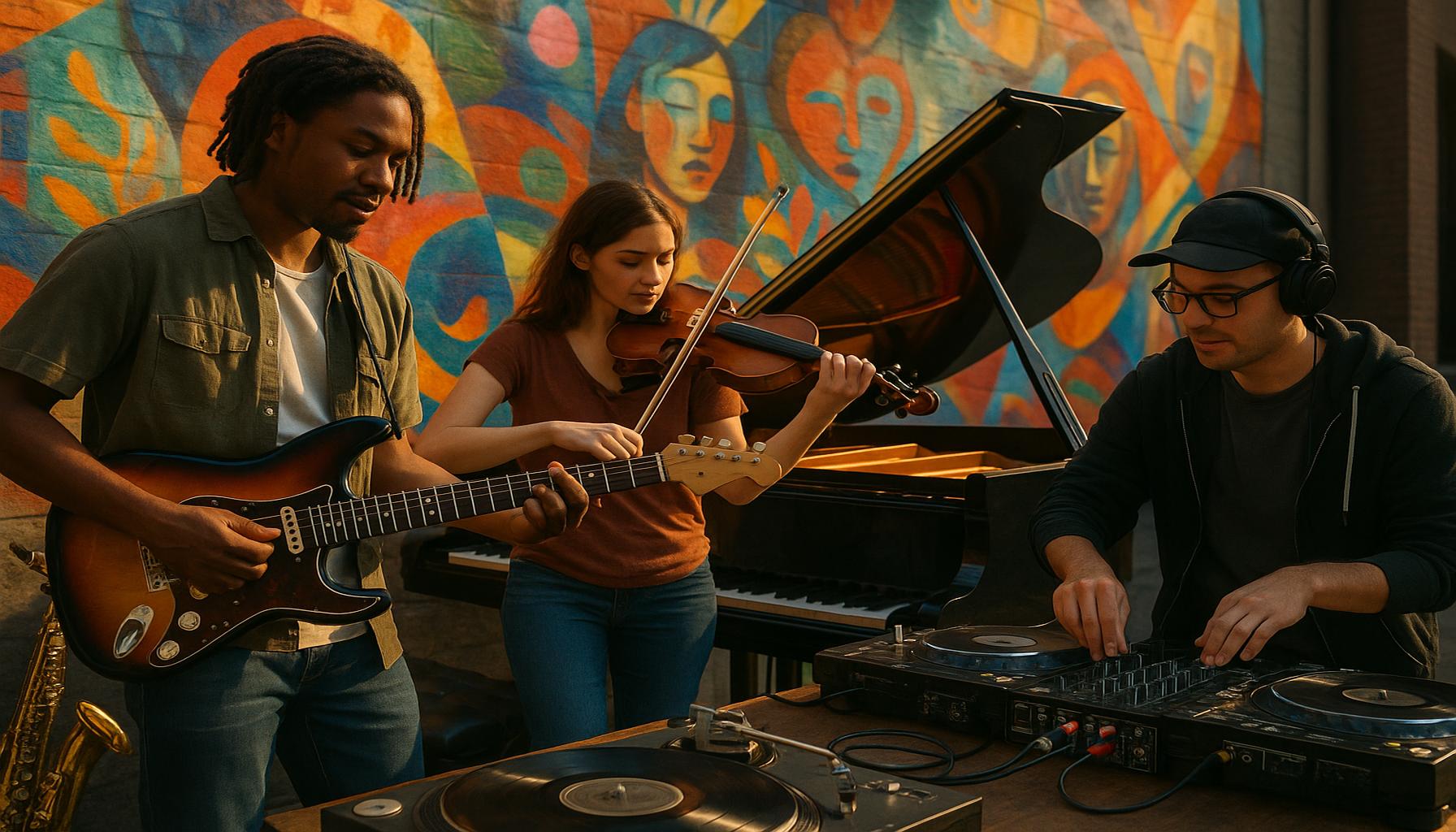Creativity and Improvisation: The Art of Playing in Groups and Its Effects on Collaboration

The Power of Collaboration in Creative Spaces
In today’s fast-paced world, the ability to collaborate effectively is more crucial than ever. Creativity and improvisation serve as powerful catalysts in enhancing collaborative efforts within groups, allowing diverse minds to converge and innovate. By understanding the fundamentals of group play, organizations can unlock new pathways to innovation and teamwork, significantly impacting their productivity and creativity.
One significant aspect of collaborative creativity lies in joint problem-solving. When individuals come together, the combination of their unique perspectives and experiences leads to richer and more effective solutions. For example, in a tech startup environment, a product development team consisting of members from marketing, engineering, and design will generate a more comprehensive product strategy compared to isolated departments brainstorming in silos. This interdepartmental collaboration encourages out-of-the-box thinking, ultimately resulting in a product that meets diverse user needs.
Another vital factor in group dynamics is enhanced communication. In spaces where improvisation is embraced, participants feel encouraged to express ideas freely, creating an atmosphere conducive to innovative thinking. Techniques such as design thinking provide frameworks that enhance communication and idea-sharing, which is particularly essential in industries where ideas evolve rapidly. Regularly engaging in open dialogue can foster a culture of transparency, making everyone in the group feel valued and heard.
Trust building is equally important, as it lays the foundation for a supportive environment. Group play activities, such as improv exercises or role-playing scenarios, increase trust among team members, allowing them to feel safe to take risks without fear of criticism. Trust-enhancing tasks help teams navigate challenges with confidence, knowing that they can rely on one another for support.
Collaborative creativity can manifest in various forms, further emphasizing its importance in team dynamics. For instance, brainstorming sessions allow spontaneous ideas to flow effortlessly, fostering an environment where innovative thoughts are not just encouraged but are the norm. Additionally, workshops that encourage hands-on participation enable team members to engage actively with each other’s ideas, leading to actionable outcomes. Furthermore, team-building activities such as outdoor retreats or problem-solving challenges can strengthen interpersonal relationships, enhancing synergy and collective productivity.

As we delve deeper into the art of playing in groups, we will uncover the effects of these creative practices on collaboration. This exploration not only highlights the numerous benefits of collaborative creativity but also serves as a guide for teams aiming to enhance their collective capabilities in the workplace and beyond. Embracing these principles can significantly transform how teams operate, leading to innovative outcomes that can set organizations apart in competitive landscapes.
DISCOVER MORE: Click here to uncover the therapeutic benefits of creative writing
Unleashing Creative Energy Through Play
At the heart of collaboration lies a potent blend of creativity and improvisation, particularly evident during group activities designed to foster play. Such environments stimulate the mind, encouraging participants to explore ideas that may not surface in traditional settings. This playful approach can lead to a myriad of benefits for organizations, making it essential for teams aiming to maximize their collective creativity.
Improvisation allows group members to think on their feet and respond dynamically to challenges. The spontaneity inherent in improv not only sparks innovative thoughts but also nurtures a mindset that values flexibility and adaptability. According to a study published in the Journal of Creativity in Business, teams that engage in improvisational exercises report a 30% increase in their creative output. This shift occurs because improv encourages participants to let go of preconceived notions and venture into uncharted territories of thought.
Another critical aspect to consider is how play-based methods can enhance group cohesion. When team members engage in activities that promote laughter and enjoyment, the resulting atmosphere can break down barriers that stifle open communication. This fosters a sense of belonging and camaraderie, which is vital for effective collaboration. Research from the Harvard Business Review has shown that teams who play together perform 40% better on collaborative tasks than their less-engaged counterparts. This statistic underscores the importance of incorporating play into an organization’s culture.
To better understand the art of playing in groups, it is helpful to examine specific techniques that can be utilized to harness creativity and improvisation:
- Storytelling Sessions: Allow team members to share personal narratives or experiences related to their work. This not only strengthens connections but also inspires collective creativity as participants build upon each other’s ideas.
- Role Reversal Exercises: Encourage team members to switch roles temporarily, allowing them to gain fresh perspectives on each other’s challenges. This technique enhances empathy and fosters innovative thinking.
- Collaborative Art Projects: Engaging in creative activities such as painting, crafting, or constructing together can spark unique ideas and strengthen bonds within the group.
As teams explore these varied methods, they begin to understand the importance of establishing a culture of trust and openness. Engaging in playful activities cultivates an environment where participants feel free to take risks and propose bold ideas without fear of judgment. This sets the stage for authentic collaboration and dynamic problem-solving.
Ultimately, the interplay of creativity and improvisation in group interactions can yield remarkable outcomes. By capitalizing on the art of play, teams can confront challenges with greater ease, transforming their collaborative efforts into a thriving hub of innovation. In the next section, we will delve deeper into the psychological effects of group play and how they influence team performance and collaboration.
| Category | Advantages |
|---|---|
| Increased Innovation | Collaborative play enhances creative thinking as participants brainstorm and support each other’s ideas, leading to fresh concepts that may not emerge in isolation. |
| Strengthened Team Dynamics | Improvisation fosters trust among team members, enabling open communication and greater cohesion, which are essential for effective collaboration. |
| Enhanced Problem Solving | Group improvisation allows for dynamic solutions to challenges, as diverse viewpoints can lead to creative alternatives that might not be considered individually. |
As we delve deeper into the impacts of “Creativity and Improvisation,” it becomes clear that practicing these skills in a group setting not only encourages unique approaches to problem-solving but also nurtures resilience and adaptability among participants. Engaging in collective play fosters an environment where trial and error is not feared, but rather embraced as a path to innovation. The skills developed through playing together translate directly into professional settings, where teams may find themselves better equipped to handle complex projects and collaborate more effectively. This synergy, born from shared experience and mutual respect, enhances both performance and personal growth, making the art of playing in groups a vital element in fostering collaboration.
DISCOVER MORE: Click here to learn about the transformative power of creative hobbies on mental health
The Psychological Impact of Group Play on Collaboration
As organizations continue to embrace the principles of creativity and improvisation, it is imperative to recognize how these elements affect the psychological well-being of team members. Engaging in group play does not just serve as a means to foster creativity; it also plays a significant role in enhancing mental health, reducing stress, and promoting resilience. When employees are encouraged to partake in playful activities, they experience positive psychological effects that inherently enhance collaboration.
Research shows that play can serve as a powerful antidote to workplace stress. A study published in the International Journal of Stress Management revealed that employees who regularly participated in playful team-building activities reported a 25% decrease in work-related stress. This reduction can be attributed to the laughter and relaxation fostered in playful environments, which in turn leads to improved focus and productivity. When team members feel less stressed, they are more likely to engage collaboratively and explore creative solutions to complex challenges.
Moreover, group play cultivates a strong sense of psychological safety. According to research from Amy Edmondson, a professor at Harvard Business School, teams that foster psychological safety allow members to freely express their thoughts and ideas without fear of negative consequences. In playful contexts, individuals are more inclined to voice unconventional ideas or take intellectual risks, knowing that the environment is safe for exploration. This crucial element reduces inhibitions, leading to a rich exchange of ideas that underpins effective collaboration.
When discussing the role of emotional intelligence in collaborative settings, it’s vital to note how playfulness enhances emotional connections among team members. Engaging in playful interactions boosts not only interpersonal relationships but also empathy within the group. According to a survey by the Society for Human Resource Management, 64% of employees reported that team-building exercises that involve play significantly improved their understanding of coworkers’ strengths and weaknesses. This heightened awareness fosters a collaborative spirit, leading to enhanced teamwork and innovation.
In addition to these emotional benefits, incorporating play into group dynamics also strengthens problem-solving skills. A collaborative study conducted by the University of California, Berkeley highlighted that groups that engaged in playful problem-solving exercises were better equipped to develop innovative solutions and think critically. Often, encountering unforeseen obstacles during playful activities mirrors challenges that teams may face in their actual projects. The ability to navigate these obstacles collectively bolsters confidence and camaraderie, crucial elements for a successful collaborative team.
Furthermore, play serves as an excellent medium for fostering diversity of thought within a group. Variations in perspective, life experiences, and creative approaches become more pronounced in playful environments. A report from the McKinsey Global Institute suggests that diverse teams are 35% more likely to outperform their homogeneous counterparts in terms of innovation. By embracing group play that encourages varied thoughts and perspectives, organizations can maximize this potential. Such diversity is only possible when team members can trust each other enough to express unique ideas without holding back.
As we explore the psychological impact of creativity and improvisation in group settings, it becomes clear that play acts as a catalyst for not only collaboration but also personal growth. By investing in a culture that prioritizes playful interactions, organizations can nurture not just a creative workforce but more resilient and engaged teams. The path toward enhanced collaboration is paved with the joy and spontaneity that comes with the art of playing together.
DIVE DEEPER: Click here to discover the art of street photography
Conclusion: Embracing the Playful Path to Enhanced Collaboration
In summary, the integration of creativity and improvisation through group play emerges as a transformative approach that can significantly elevate collaboration within teams. The psychological advantages of engaging in playful activities extend beyond mere enjoyment, fostering an environment characterized by reduced stress, heightened mental agility, and a stronger sense of psychological safety. These elements serve as foundational pillars that result in not only a motivating atmosphere but also a thriving culture of innovation.
The research reviewed demonstrates that teams that prioritize playful interactions cultivate a spirit of emotional intelligence and understanding, improving interpersonal dynamics and resilience. As organizations realize the importance of diversity of thought, they find that embracing various perspectives during playful engagements yields a wealth of creative solutions to complex problems. Encouraging team members to explore ideas freely—from brainstorming sessions to improvisational exercises—facilitates the emergence of a collaborative synergy that can drive success.
Moving forward, leaders should consider investing time and resources into creating opportunities for play within the workplace. By championing a culture that celebrates creativity and improvisation, organizations can unlock the full potential of their workforce, resulting in enhanced collaboration, innovation, and overall satisfaction among team members. The art of playing together is not merely a whimsical endeavor; it is a strategic initiative that holds the key to building resilient, agile, and highly effective teams.


